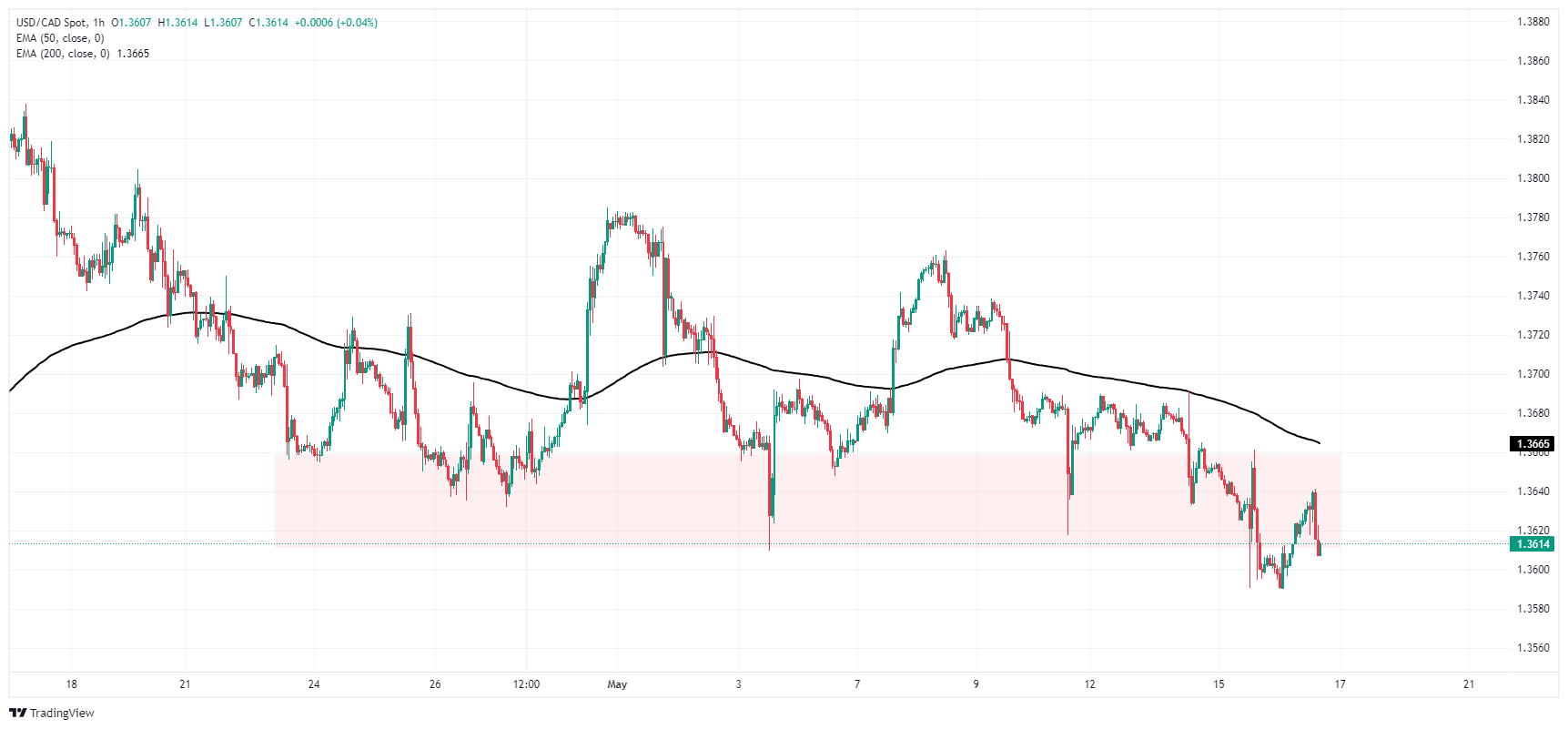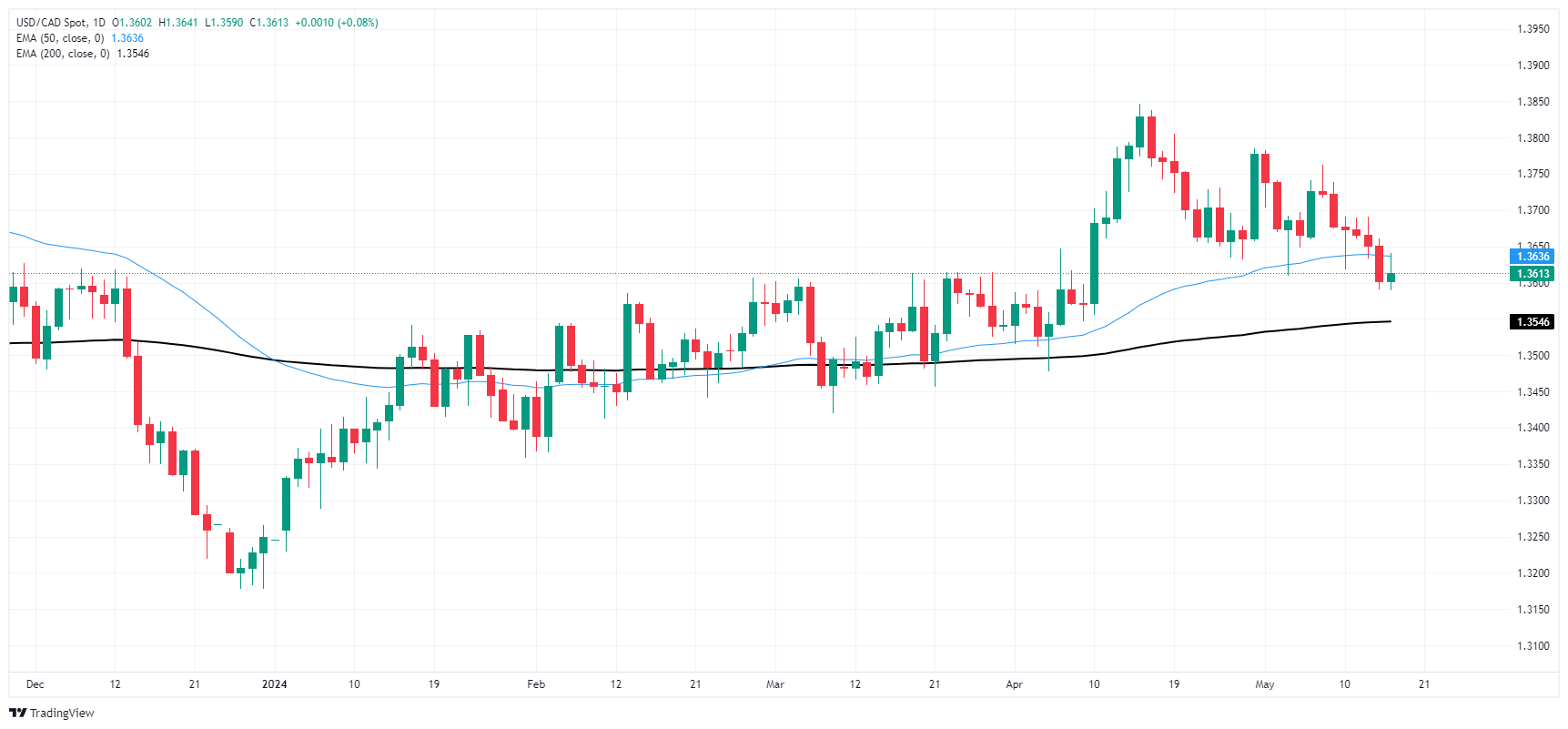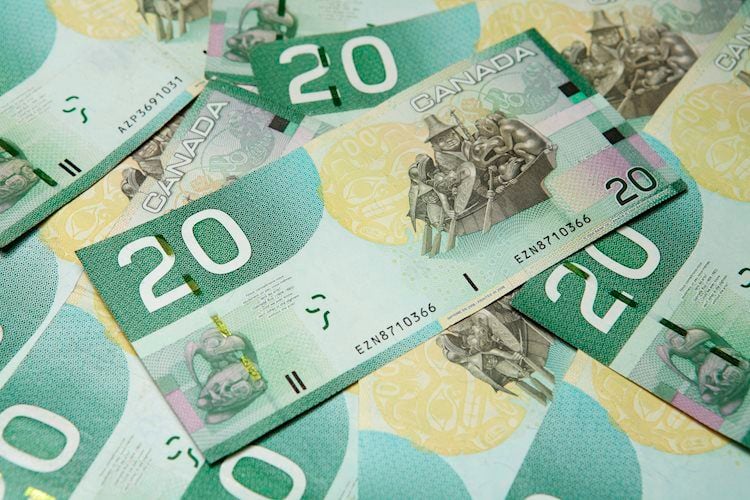- Canadian Dollar grapples with recovering US Dollar.
- Canada remains absent from the economic calendar on Thursday.
- CAD traders looking ahead to next Tuesday’s Canadian CPI inflation.
The Canadian Dollar (CAD) is broadly higher on Thursday, gaining ground across the board but still struggling under the weight of the US Dollar (USD) as the Greenback recovers from the previous day’s plunge. Mid-tier data had a limited impact, and Fedspeak is expected to dominate the headlines.
Canada delivered no economic data on Thursday and is expected to remain absent or strictly low-tier until next week’s Consumer Price Index (CPI) inflation release slated for next Tuesday. US data carried few surprises, with housing starts and new unemployment claims missing forecasts, but only by slim margins.
Daily market movers: Canadian Dollar battles Greenback as US data, Fedspeak dominate
- US Initial Jobless Claims eased to 222K for the week ended May 10, stepping back from the previous week’s 232K (revised from 231K) but still undershot the 220K forecast.
- US Housing Starts in April rose to 1.36 million MoM, above the previous 1.287 million (revised from 1.321 million) but below the forecast of 1.48 million.
- Talking points from Fed policymakers to dominate the financial news cycle until higher-impact data approaches.
- Federal Reserve Bank of Cleveland President Loretta J. Mester on Thursday:
- I welcome recent CPI data as a sign of cooling inflation.
- It will still take longer to gain confidence that inflation is moving toward 2%.
- Risks to inflation side of Fed’s mandate have increased.
- A strong economy means Fed is risking little to hold policy in place.
Canadian Dollar PRICE Today
The table below shows the percentage change of Canadian Dollar (CAD) against listed major currencies today. Canadian Dollar was the strongest against the Swiss Franc.
| USD | EUR | GBP | JPY | CAD | AUD | NZD | CHF | |
|---|---|---|---|---|---|---|---|---|
| USD | 0.15% | 0.13% | 0.26% | 0.12% | 0.25% | 0.05% | 0.35% | |
| EUR | -0.15% | -0.03% | 0.12% | -0.01% | 0.09% | -0.07% | 0.19% | |
| GBP | -0.13% | 0.03% | 0.16% | 0.02% | 0.11% | -0.05% | 0.22% | |
| JPY | -0.26% | -0.12% | -0.16% | -0.14% | -0.01% | -0.25% | 0.09% | |
| CAD | -0.12% | 0.00% | -0.02% | 0.14% | 0.13% | -0.06% | 0.23% | |
| AUD | -0.25% | -0.09% | -0.11% | 0.00% | -0.13% | -0.20% | 0.10% | |
| NZD | -0.05% | 0.07% | 0.05% | 0.25% | 0.06% | 0.20% | 0.29% | |
| CHF | -0.35% | -0.19% | -0.22% | -0.09% | -0.23% | -0.10% | -0.29% |
The heat map shows percentage changes of major currencies against each other. The base currency is picked from the left column, while the quote currency is picked from the top row. For example, if you pick the Canadian Dollar from the left column and move along the horizontal line to the US Dollar, the percentage change displayed in the box will represent CAD (base)/USD (quote).
Technical analysis: Canadian Dollar finds thin gains, but Greenback weighs
The Canadian Dollar (CAD) is broadly higher on Thursday but still struggling to make meaningful gains against the US Dollar. The CAD is up over half a percent against the Japanese Yen (JPY) and a third of a percent against the Swiss Franc (CHF). On the low side, the Canadian Dollar is weaker by about a tenth of a percent against the USD.
USD/CAD continues to churn near the 1.3600 handle as technicals swamp the pair near a familiar demand zone from 1.3660. The pair remains on the low side of the 200-hour Exponential Moving Average (EMA) at 1.3664. The Canadian Dollar tested a four-week high against the US Dollar on Thursday, dragging the USD/CAD pair down to 1.3590 before USD bids recovered into positive territory.
Despite slim topside gains for the Greenback, USD/CAD is battling near-term bearishness, trading south of the 50-day EMA at 1.3637. The pair is down -1.7% from the last swing high above 1.3840.
USD/CAD hourly chart
USD/CAD daily chart
Risk sentiment FAQs
In the world of financial jargon the two widely used terms “risk-on” and “risk off” refer to the level of risk that investors are willing to stomach during the period referenced. In a “risk-on” market, investors are optimistic about the future and more willing to buy risky assets. In a “risk-off” market investors start to ‘play it safe’ because they are worried about the future, and therefore buy less risky assets that are more certain of bringing a return, even if it is relatively modest.
Typically, during periods of “risk-on”, stock markets will rise, most commodities – except Gold – will also gain in value, since they benefit from a positive growth outlook. The currencies of nations that are heavy commodity exporters strengthen because of increased demand, and Cryptocurrencies rise. In a “risk-off” market, Bonds go up – especially major government Bonds – Gold shines, and safe-haven currencies such as the Japanese Yen, Swiss Franc and US Dollar all benefit.
The Australian Dollar (AUD), the Canadian Dollar (CAD), the New Zealand Dollar (NZD) and minor FX like the Ruble (RUB) and the South African Rand (ZAR), all tend to rise in markets that are “risk-on”. This is because the economies of these currencies are heavily reliant on commodity exports for growth, and commodities tend to rise in price during risk-on periods. This is because investors foresee greater demand for raw materials in the future due to heightened economic activity.
The major currencies that tend to rise during periods of “risk-off” are the US Dollar (USD), the Japanese Yen (JPY) and the Swiss Franc (CHF). The US Dollar, because it is the world’s reserve currency, and because in times of crisis investors buy US government debt, which is seen as safe because the largest economy in the world is unlikely to default. The Yen, from increased demand for Japanese government bonds, because a high proportion are held by domestic investors who are unlikely to dump them – even in a crisis. The Swiss Franc, because strict Swiss banking laws offer investors enhanced capital protection.
